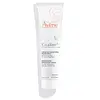What's inside
What's inside
 Key Ingredients
Key Ingredients

 Benefits
Benefits

 Concerns
Concerns

 Ingredients Side-by-side
Ingredients Side-by-side

Water
Skin ConditioningVegetable Oil
Skin ConditioningBehenyl Alcohol
EmollientCetyl Alcohol
EmollientButyrospermum Parkii Butter
Skin ConditioningEthylhexyl Stearate
EmollientIsopropyl Palmitate
EmollientIsoamyl Laurate
EmollientGlycerin
HumectantGlyceryl Stearate
EmollientPentaerythrityl Distearate
EmulsifyingSodium Stearoyl Glutamate
CleansingCentella Asiatica Leaf Extract
Skin ConditioningZinc PCA
HumectantAllantoin
Skin ConditioningXanthan Gum
EmulsifyingGellan Gum
Citric Acid
BufferingAlcohol
AntimicrobialCaprylyl Glycol
EmollientDecylene Glycol
Skin ConditioningPhenoxyethanol
PreservativeWater, Vegetable Oil, Behenyl Alcohol, Cetyl Alcohol, Butyrospermum Parkii Butter, Ethylhexyl Stearate, Isopropyl Palmitate, Isoamyl Laurate, Glycerin, Glyceryl Stearate, Pentaerythrityl Distearate, Sodium Stearoyl Glutamate, Centella Asiatica Leaf Extract, Zinc PCA, Allantoin, Xanthan Gum, Gellan Gum, Citric Acid, Alcohol, Caprylyl Glycol, Decylene Glycol, Phenoxyethanol
Water
Skin ConditioningCaprylic/Capric Triglyceride
MaskingParaffinum Liquidum
EmollientGlycerin
HumectantHydrogenated Vegetable Oil
EmollientZinc Oxide
Cosmetic ColorantPropylene Glycol
HumectantPolyglyceryl-2 Sesquiisostearate
EmulsifyingPEG-22/Dodecyl Glycol Copolymer
EmulsifyingAluminum Stearate
Cosmetic ColorantAquaphilus Dolomiae Ferment Filtrate
Skin ConditioningArginine
MaskingBeeswax
Emulsion StabilisingCopper Sulfate
Skin ConditioningMagnesium Stearate
Cosmetic ColorantMicrocrystalline Wax
Emulsion StabilisingTromethamine
BufferingZinc Sulfate
AntimicrobialWater, Caprylic/Capric Triglyceride, Paraffinum Liquidum, Glycerin, Hydrogenated Vegetable Oil, Zinc Oxide, Propylene Glycol, Polyglyceryl-2 Sesquiisostearate, PEG-22/Dodecyl Glycol Copolymer, Aluminum Stearate, Aquaphilus Dolomiae Ferment Filtrate, Arginine, Beeswax, Copper Sulfate, Magnesium Stearate, Microcrystalline Wax, Tromethamine, Zinc Sulfate
 Reviews
Reviews

Ingredients Explained
These ingredients are found in both products.
Ingredients higher up in an ingredient list are typically present in a larger amount.
Glycerin is already naturally found in your skin. It helps moisturize and protect your skin.
A study from 2016 found glycerin to be more effective as a humectant than AHAs and hyaluronic acid.
As a humectant, it helps the skin stay hydrated by pulling moisture to your skin. The low molecular weight of glycerin allows it to pull moisture into the deeper layers of your skin.
Hydrated skin improves your skin barrier; Your skin barrier helps protect against irritants and bacteria.
Glycerin has also been found to have antimicrobial and antiviral properties. Due to these properties, glycerin is often used in wound and burn treatments.
In cosmetics, glycerin is usually derived from plants such as soybean or palm. However, it can also be sourced from animals, such as tallow or animal fat.
This ingredient is organic, colorless, odorless, and non-toxic.
Glycerin is the name for this ingredient in American English. British English uses Glycerol/Glycerine.
Learn more about GlycerinWater. It's the most common cosmetic ingredient of all. You'll usually see it at the top of ingredient lists, meaning that it makes up the largest part of the product.
So why is it so popular? Water most often acts as a solvent - this means that it helps dissolve other ingredients into the formulation.
You'll also recognize water as that liquid we all need to stay alive. If you see this, drink a glass of water. Stay hydrated!
Learn more about Water